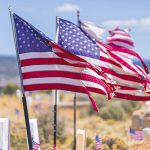
‘We need the water’, US Supreme Court denies Diné water rights
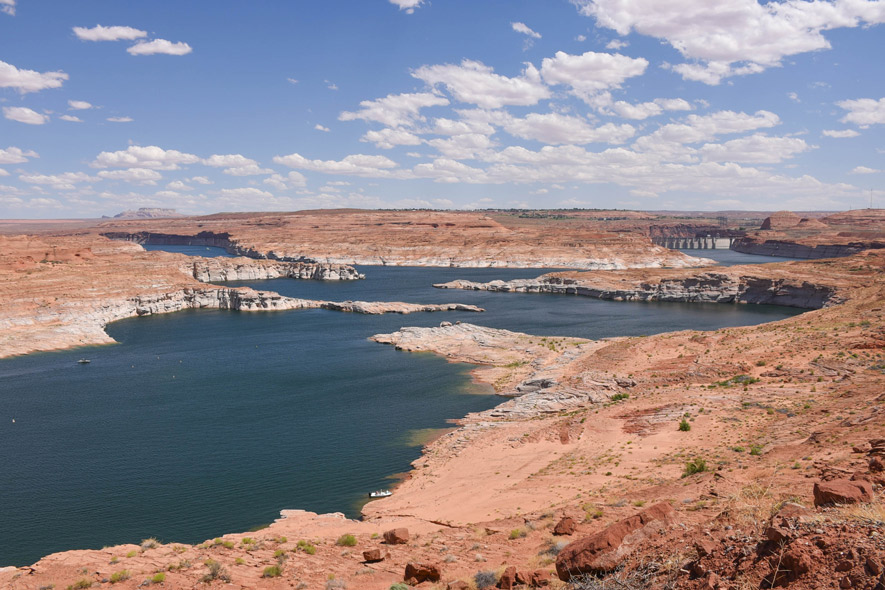
Navajo Times | Krista Allen
Water flows through a channel near Antelope Island on Lake Powell near Dá’deestł’in Hótsaa on June 22, 2023.
PHOENIX
A simple ask for securing water left the Navajo Nation in an even bigger drought.
According to DigDeep’s Navajo Water Project website, 30% of Navajo families living in the Nation live without running water.
The need for water in the Nation is a clear picture. Still, to Supreme Court Justice Brett Kavanaugh, that picture did not involve the U.S. government and its duty to recognize the Treaty of 1868, which allowed the Diné to return to Diné Bikéyah.
The treaty is an important symbol of Diné sovereignty and what it means to live as Diné.
But the treaty isn’t the only document under which the Navajo Nation has rights. The judicially crafted Winters Doctrine provides water for the needs of Natives who reside on federally reserved lands. The Nation could sue the U.S. for failing to consider its Winters rights.
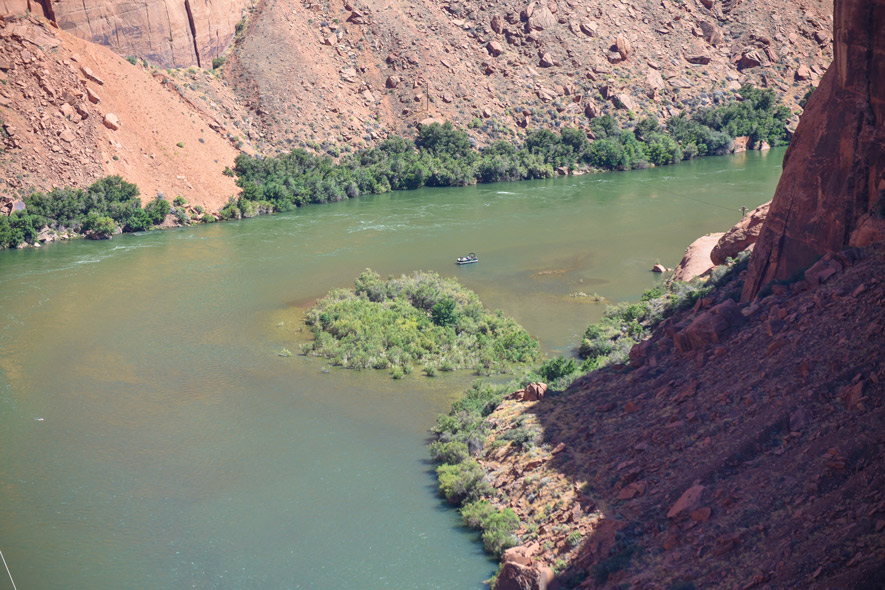
Navajo Times | Krista Allen
A raft floats on the Colorado River near Dá’deestł’in Hótsaa on June 22, 2023.
Changes in the west
Council Delegate Helena Nez Begay, who represents Bodaway-Gap, Coppermine, Kaibeto, LeChee, and Tonalea-Red Lake, grew up in northwestern Navajo, seeing water depletion.
“I’m disappointed with what the decision was,” Nez Begay said. “I know we’re not providing the proof that we use water, but we need the water, especially for the people with their livestock.”
When Nez Begay was younger, she remembers Lake Powell’s water level at full pool (elevation 3,700). The prolonged drought, combined with water withdrawals that many believe are not sustainable, has caused a dramatic drop in Powell’s water level, which has risen more than 41 feet since the beginning of the year, according to the Lake Powell Water Database.
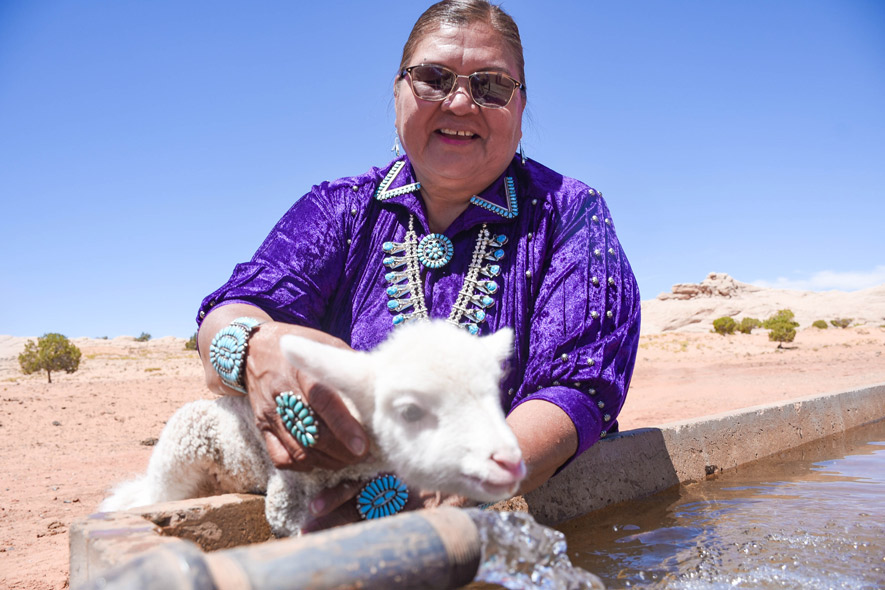
Navajo Times | Krista Allen
Council Delegate Helena Nez Begay waters her lamb at her family’s windmill near Turtle Rock Ranch, Ariz., in this May 12, 2022, file photo.
As a Council delegate, Nez Begay sees her people needing to go to nearby border towns like Tuba City and Page to get water. She said they travel daily during the summer to sustain their lives where water isn’t accessible.
“They have neighbors who don’t have trucks to haul water, so we really need that water to be brought up to the Nation to somewhere where we get credit for it instead of Page because they look at it like the city of Page is utilizing the water,” Nez Begay said.
However, most of the water is being used by Diné, who go there to haul water home, said Nez Begay.
If water was brought to the Navajo Nation, Nez Begay said the tribe could get credit for needing water, and the state could see that the tribe really does need water rather than looking at border towns and how much it uses.
Nez Begay said as a delegate, she needs to focus more on getting water to the Nation for her Western communities.
Tribe’s water resources, water team
Alongside Nez Begay, President Buu Nygren said the situation is challenging, but it’s putting accountability back on the tribe to get its water sources.
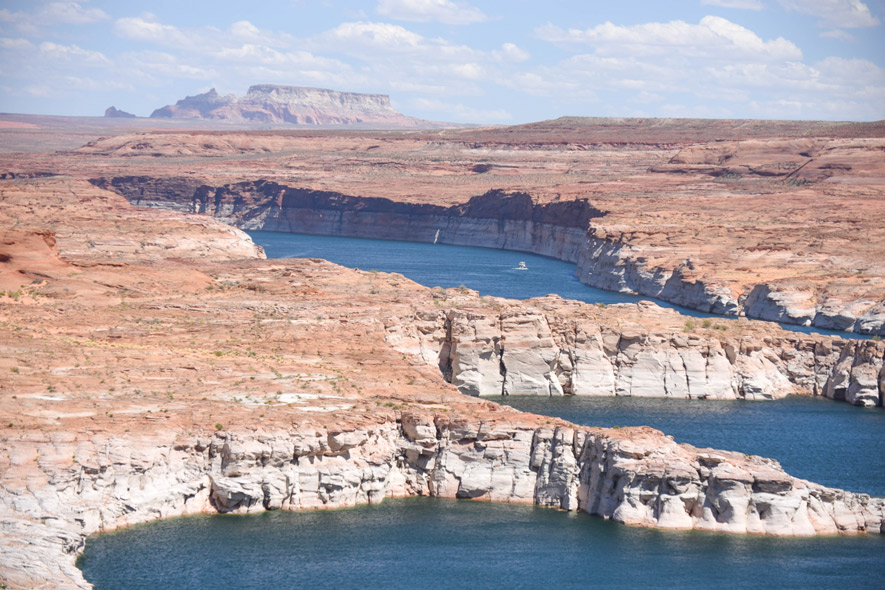
Navajo Times | Krista Allen
Lake Powell’s water level reaches 37.96% of full pool (elevation 3,700) on June 22, 2023. Months after the surface of Lake Powell, Dá’deestł’in Hótsaa, sunk to an all-time low, the Colorado River reservoir is rising more than a foot a day.
“It’s going to hurt us,” Nygren said in an interview with the Navajo Times on Thursday. “It’s a setback. I think what’s great about it, too, is it’s also putting the responsibility back on the Nation, and it also showcases to me that if the U.S. is not going to help us quantify the water, then as a Nation, we need to start developing a robust water team.”
Nygren said that even though the Nation’s current litigation team is “strong,” he wants to build it up even more to quantify its water because it’s what the Navajo Nation deserves.
The 5-4 decision made by the Supreme Court was a nail-biter, said Nygren.
The five justices who voted against the Nation didn’t recognize the hundreds of thousands of Dine without water that Nygren said he knows to need the water.
“We’ll continue,” Nygren said, “that we put our best foot forward so we secure as much water as we can.”
For the Nation, Nygren said what is unique about the people is that they have the resources to tell their side of the story. While it may be “scary” to see what’s happening, Nygren said it’s vital that people also support their leaders, his administration, and the Council delegates when they’re out advocating for water.
Just as Nez Begay has grown up seeing water deplete, the Navajo Nation has aged, seeing little to no support on water rights issues.
Nygren said water litigation has been happening since the 70s and 2010s, and water rights were on the table each time. He said the deal gets smaller, and the Navajo Nation needs to act fast.
Speaker Crystalyne Curley said the Nation had had a long water fight but won’t stop until water is secured for future generations.
Importance of tó
Like Nez Begay and Nygren, Curley is disappointed with the decision and said it’s unfortunate that the Supreme Court did not recognize water’s importance in the Nation.
Curley and Nygren hoped the Supreme Court would continue recognizing the rights tribes have because of its decision last week upholding the Indian Child Welfare Act.
“It’s a part of everyday function for us,” Curley told the Times, “but being able to have claims to our water rights, it gives a brighter future for our children.”
Former President Jonathan Nez said it was disappointing to hear the decision. However, if he were still in office, he would’ve already scheduled a meeting with the Arizona Gov. Katie Hobbs to discuss possible solutions the U.S. government didn’t want.

Navajo Times | Krista Allen
The Colorado River, Tooh Bikooh, flows through Glen Canyon in Dá’deestł’in Hótsaa on June 22, 2023.
“We believe the federal government has an obligation for the Navajo people to have a permanent homeland, and that includes water,” Nez said in an interview.
When the ruling for the ICWA was upheld, Nez said it was a surprising 7-2 decision by the justices because when it came down to just the Navajo people, sovereignty was disrespected, and it was a slap in the face.
Supreme Court Justice Neil Gorsuch recognized the tribe’s treaties. Nez said the treaties are nothing but broken promises, and this decision affects Indian Country’s water rights.
Throughout the years, Nez has seen the many arguments about water and said now the different state parties want to settle water rights, but now is not the time to do so during a drought.
Nez said the U.S. Department of Justice and the three states involved in keeping the water from the Colorado River for themselves are most likely celebrating even though the Winters doctrine recognizes the tribe should have a seat at the table in water discussions.
“It just shows that the Supreme Court legislates off the bench,” Nez said. “Just because the president, the White House said it’s going to open litigations by other tribes, other water rights settlements––it’s just absurd,” Nez said. “I’m sure––was an influence in the U.S. Supreme Court decision.”
While the Supreme Court may feel threatened by more litigation and having to release water elsewhere, Nez said 30%-40% of Navajo people do not have that water.
All that the tribe was asking for in the case was to assess the water security for the Navajo Nation, said Nez, and the government failed to carry out that duty.
Nez’s experience in the tribal government allowed him to help with aiding water rights in New Mexico, and he’s glad to see the new water projects happen there to get water to the Navajo people.
From this moment on, Nez said, he hopes to see Hobbs work with the tribes in Arizona that helped put her in office.
“It’s not about consumption, drinking water, it’s about our livestock, the water needs for them, and the water needs for our farms,” Nez said. “That sustains life, that there is developing a permanent homeland for our Navajo people, so we need to quantify and fight for every bit of water.”
Read more in the June 29 edition of the Navajo Times.








 Highway 264,
Highway 264, I-40, WB @ Winslow
I-40, WB @ Winslow